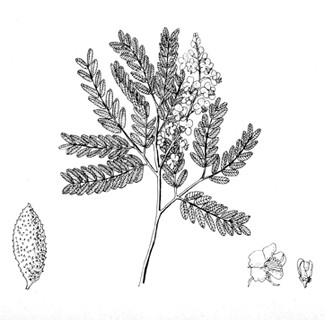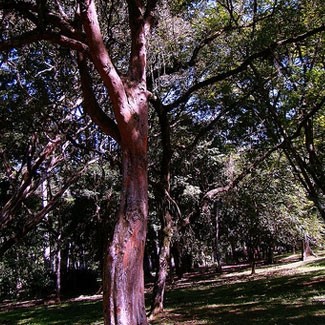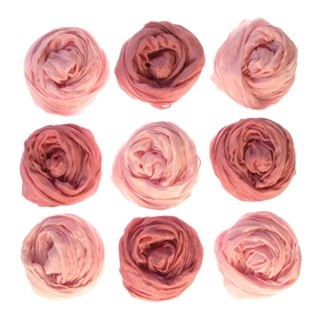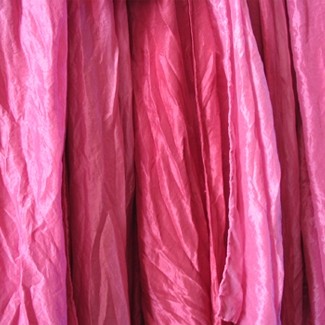| Brazilian Wood
Caesalpinia brasiliensis L.
The Plant
The wood, from various legume trees used for dyeing, collectively called rosewoods, originated mainly in South America, the Antilles and India.
The wood was distinguished in seven different types. The most popular species are the Caesalpinia brasiliensis and the Caesalpinia christa. Brazilian wood , or wood from Bahia, is obtained from the Caesalpinia brasiliensi s (originally Arabic), giving the country its name.
This wood was traded in large quadrangular stumps; brown externally and brick red in the fresh cut sections, rich with coloring matter. The Fernambuco wood from the Caesalpinia christa in the Brazilian forest and Jamaica, is similar to the wood from Bahia but more precious. Rosewoods from the Orient were largely used in Europe from the beginning of Medieval times for dyeing cotton, wool and silk.
Usage
The red nucleus of the tree is freed from the alburnum, cut in blocks and reduced into woodchips. The color is obtained by soaking the chips. In the country of origin this type of wood is used not only to produce color but is also used for its medicinal properties.
Color characteristics
Excellent resistance when washed in water.
Sensitive to light, with time it tends to lightly change, lowering tonality.
It is best to keep in a dark place when not worn.
Extremely sensitive to acidic substances like perfume,
food, beverages and perspiration.
If it should experience a change of color due to one of these events,
rinse well and leave it to soak in water with neutral detergent .
This procedure should have good results in getting the uniform color back.
Bibliography
Franco Brunello “ L’arte della tintura nella storia dell’umanita” Neri Pozza editore – Vicenza;
Gunter Meier ” Colori vegetali. Ricerca, produzione, utilizzo” Associazione Casanova
The Plant
The wood, from various legume trees used for dyeing, collectively called rosewoods, originated mainly in South America, the Antilles and India.
The wood was distinguished in seven different types. The most popular species are the Caesalpinia brasiliensis and the Caesalpinia christa. Brazilian wood , or wood from Bahia, is obtained from the Caesalpinia brasiliensi s (originally Arabic), giving the country its name.
This wood was traded in large quadrangular stumps; brown externally and brick red in the fresh cut sections, rich with coloring matter. The Fernambuco wood from the Caesalpinia christa in the Brazilian forest and Jamaica, is similar to the wood from Bahia but more precious. Rosewoods from the Orient were largely used in Europe from the beginning of Medieval times for dyeing cotton, wool and silk.
Usage
The red nucleus of the tree is freed from the alburnum, cut in blocks and reduced into woodchips. The color is obtained by soaking the chips. In the country of origin this type of wood is used not only to produce color but is also used for its medicinal properties.
Color characteristics
Excellent resistance when washed in water.
Sensitive to light, with time it tends to lightly change, lowering tonality.
It is best to keep in a dark place when not worn.
Extremely sensitive to acidic substances like perfume,
food, beverages and perspiration.
If it should experience a change of color due to one of these events,
rinse well and leave it to soak in water with neutral detergent .
This procedure should have good results in getting the uniform color back.
Bibliography
Franco Brunello “ L’arte della tintura nella storia dell’umanita” Neri Pozza editore – Vicenza;
Gunter Meier ” Colori vegetali. Ricerca, produzione, utilizzo” Associazione Casanova




